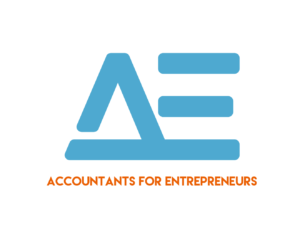
We’ve written before about the different accounting terms and concepts surrounding balance sheets on the financial statement. The balance sheet shows a report of a company’s assets and liabilities at a specific point in time. That makes it different from the income statement, which we will go over in-depth further in this article.
The Income Statement
As opposed to the balance sheet, an income statement summarizes the income and expenses falling under a specific time period. It can be a month, a quarter, a year, or even more. If a balance sheet were a photo that showed a shot of a company’s finances at a specific point in time, an income statement would be a video. Each type of report serves a different purpose and offers different insights.
As such, here are some terms on your income statement you need to understand:
1. The Cost of Goods Sold (COGS)
The COGS are the costs directly related to the creation of a product or service, excluding the money spent in operations. This can cover the cost of raw materials, manufacturing, processing, direct labor, and so on.
This would not include marketing and management costs, which would fall under .
2. Depreciation (Dep)
Depreciation is defined as the slow loss of value in an asset over time. Automobiles and specialized equipment fall under this category.
For the purposes of the Income Statement, these are listed as a non-cash expense since it does not have a direct impact on your company’s cash position.
3. Operating Expenses (OpEx)
Expenses refer to any costs incurred by a company. It is any amount of money spent to generate revenue, and are recorded by accountants as being on a cash or accrual basis.
Cash expenses recognize revenues and expenses as they are incurred, while accrual accounting matches anticipated revenues with anticipated expenses.
You may be able to write off certain expenses on your tax returns so long as they meet IRS guidelines. Make sure to consult your accounting firm to find out how much of your spending can be written off.
4. Revenue (Sales or Rev)
Revenue is the money earned by a business or company. It is an indication of the quality of your earnings. While it doesn’t directly indicate whether or not a company is profitable, revenue is a gross income figure that is often used in plenty of other ratios and formulas for indicating the health of a company’s finances.
You may also hear the term Net Revenue, which nets out any discounts or refunds from your gross revenues.
5. Overhead Expenses
Overhead expenses are the static costs that pertain to general business functions, such as paying for accounting firm services and facilities. They are ongoing fixed costs that happen regardless of revenues.
6. Gross Profit (GP)
The gross profit figure refers to the profits of a company without taking overhead expenses into account.
To get to your business’ GP figure, subtract COGS from your revenue.
The larger this value is, the better as it indicates more profitability to the bottom line to cover operating expenses.
7. Gross Margin (GM)
The gross margin is a ratio that represents the health of a company.
GM is calculated by taking your GP and dividing it by your revenue.
Like the GP, the higher this is, the better. You may want to consider analyzing what your industry average GM is and try to aim towards those levels.
8. Net Income (NI)
Net income is the dollar amount earned in profits. Note that unlike revenue, it takes expenses into consideration as well as non-cash items like depreciation.
To find the NI, subtract all the expenses in a given period, including COGS, Overhead Expenses, Depreciation, Taxes, and so on.
The final figure indicates how much revenue exceeds (or falls short of) your expenses.
The NI metric is valuable for both internal and external stakeholders as internally, it plays a crucial role in decision-making while externally, it indicates how much money is available to go towards dividends, reinvestment, repurchase of shares, and more.
If you’re looking to analyze more from a cash flow perspective, consider subtracting out non-cash items like depreciation and amortization. You may hear this term as free cash flow or operating cash flows.
Final thoughts
The income statement is an essential aspect of the running of any business. Without an understanding of the income statement and its terms and concepts, you would be hard-pressed to make the right decisions about your financial future.
While this is just the tip of the accounting and finances iceberg, this should help give you a better grasp. Just make sure to tune in to part three of this series, which will cover general accounting terms.
If you do need the help of an accounting firm’s services, book a free call with us at A4E. We can provide you with fantastic insight and help you choose a package that best fits your needs.

1 Comment